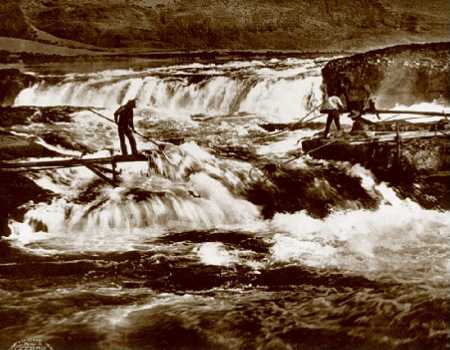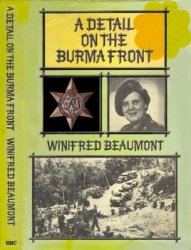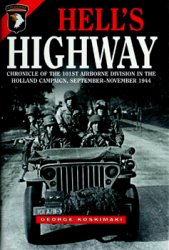The Pine Ridge reservation in South Dakota had the distinction of being the poorest place in America in 1973. More and more reservation land was being leased to cattle ranchers, and secret plans were underway to begin uranium drilling. Meanwhile, the unemployment rate at Pine Ridge, home to the Oglala Lakota people, was at 90 percent. It also had one of the highest murder rates—over 100 native people had been murdered in surrounding towns that year.
Much of the trouble was pinned to a corrupt tribal chairman, Dick Wilson, who, among other things, signed over about 200,000 acres of reservation land to the U. S. government. When many traditional Oglala people demanded Wilson’s impeachment, his private army of GOONs (Guardians of the Oglala Nation) began assaulting those who opposed Wilson. Oglala women elders asked AIM for help.
The reservation was being described as a place of civil war. According to residents Ellen Moves Camp and Arlette Loud Hawk, U. S. marshals with guns were a common sight, including marshals on top of the BIA building, ready to shoot. Tribal Chairman Wilson had prohibited any type of gathering, even powwows. According to Loud Hawk, “If you wanted to go to Pine Ridge, you had to go in a group to be safe and to ensure that you come back alive. So we knew in order to survive we needed to be in groups. We couldn’t be alone. Because if they got somebody alone, they killed them. And there’s people that are not found because they killed them and did away with their bodies.”
There had been clashes between AIM, supported by many traditionalists, and the current

Fishing for salmon.
LEONARD PELTIER
Leonard Peltier (Anishinabe, Dakota, and Lakota) grew up on two North Dakota reservations, the Turtle Mountain Chippewa and Fort Totten Sioux. When Peltier was about 14 years old, the federal government began its Relocation Program, which was designed to terminate reservations. Many people were very angry, and this convinced him that warriors were still needed to protect and defend Native American people.
As an adult, Peltier protested in support of native fishing rights and participated in the takeover of Fort Lawton, an abandoned Washington fort that, by treaty, belonged to native people of the area. After this, Peltier continued his activism by joining AIM. He was a part of the Trail of Broken Treaties march and the takeover of the BIA building in Washington, D. C.
Peltier was accused of the attempted murder of a Milwaukee police officer, a charge that was eventually dropped. While he was In jail, the siege at Wounded Knee occurred. Although Peltier went underground, he still appeared around the country to assist Native Americans in need. This eventually took him back to the Pine Ridge Reservation to see what could be done to help the Oglala people. Peltier was assisting with the running of a sweat lodge ceremony when a shootout with FBI agents led to their deaths. Peltier was arrested and convicted of their murders.
Peltier has consistently maintained his innocence. Over 30 years later, there continue to be FBI documents related to this incident that haven't been released. People from all walks of life, including politicians and actors, have urged officials to release Peltier.
BIA-supported tribal government. Wilson had barred AIM from coming onto the reservation, but a group of women elders contacted Dennis Banks and Russell Means, who arrived in February 1973. In the first meeting with AIM in Calico, the women told Banks and Means about the deaths of their children and grandchildren
By violence during Wilson’s term of office. The women suggested holding another Wounded Knee in remembrance of ancestors who had lost their lives.
Approximately 200 activists took over the Wounded Knee village, calling it the Oglala Sioux Nation. The Oglala people and their supporters held onto Wounded Knee as tribal police, FBI, and federal marshals surrounded them. Many bullets were exchanged. Media attention on the occupation of Wounded Knee was seen around the country, and the majority of the American public supported the Oglala people. Carter Camp, one of the leaders at the Wounded Knee takeover, called Wounded Knee “a powerful symbol to Indian people... that changed Indian Country.”
Larry Levin, one of several pilots who flew over the reservation to make a food drop reported seeing roadblocks and armored military vehicles surrounding Wounded Knee on day 50. Fie and his co-pilot. Bill Zimmerman, said it looked like they had flown into a war zone. Along with over 1,500 pounds of food, they sent a message to the protestors. “To the Independent Oglala Nation and their friends at Wounded Knee: Your struggle for freedom and justice is our struggle. Our hearts are with you.”
On the 71st day, AIM and the traditionalists agreed to end the occupation if the federal government would began a full investigation into
INDIAN HEALTH SERVICES
As part of the Department of Health and Human Services, Indian Health Services provides health care for up to 1.9 million Native Americans and Alaskan Natives of federally recognized tribes or nations. While promises of providing health care to Native Americans have a long history, an organized system didn’t come about until the passage of the Indian Health Care Improvement Act in 1976. The law was proposed after studies found that the overall health of Native Americans ranked far lower than that of other groups. Urban and tribal health care programs provide health care to Native Americans regardless of health insurance status. Since the inception of broader health services for Native Americans, life expectancy has increased nine years, although it’s still less than the general population.
Their grievances. The FBI arrested 565 people, mainly AIM members and male Oglala, although 85 women were charged. JohnTrudell, cochairman of AIM at the time, reported that too much of AIM’s energy went into defending the people on trial. As an organization, AIM lost its momentum as it became increasingly fragmented after eight months, the longest federal trial in U. S. history. Meanwhile, violence against the Lakota continued.
Just two years later, FBI agents came onto the Pine Ridge reservation stating that they were looking for an Oglala who had been charged with theft and assault. Shots fired under confusing circumstances resulted in the death of two agents and one AIM member. Another AIM member, Leonard Peltier, was charged and convicted of the murder of the two FBI agents. He remains in prison as of 2010.
Peltier professed his innocence of the crimes. Since his arrest, dozens of petitions and protests have taken place. In 1979, AIM leader John Trudell led a protest at the Supreme Court in Washington, D. C. Hours later, a mysterious fire killed Trudell’s wife, three young children, and mother-in-law at their home on the Nevada Duck Valley Reservation. According to Trudell, the FBI did not investigate. He resigned as AIM cochairman.
Although AIM and other civil rights groups faded from the spotlight or disbanded, their actions were remembered. President Nixon dropped the plan to terminate the reservations. More attention was focused on the needs of Native Americans, including education and health. In 1972, the Indian Education Act created an Office of Indian Education with funding for bilingual and bicultural programs, including appropriate teaching materials for Native American education. This was followed in 1975 with the passage of the Indian Self-Determination and Education Assistance Act, which increased programs and access to programs that provided education and other necessary services. The act also allowed Indian nations more power within their tribal governments.




 World History
World History









